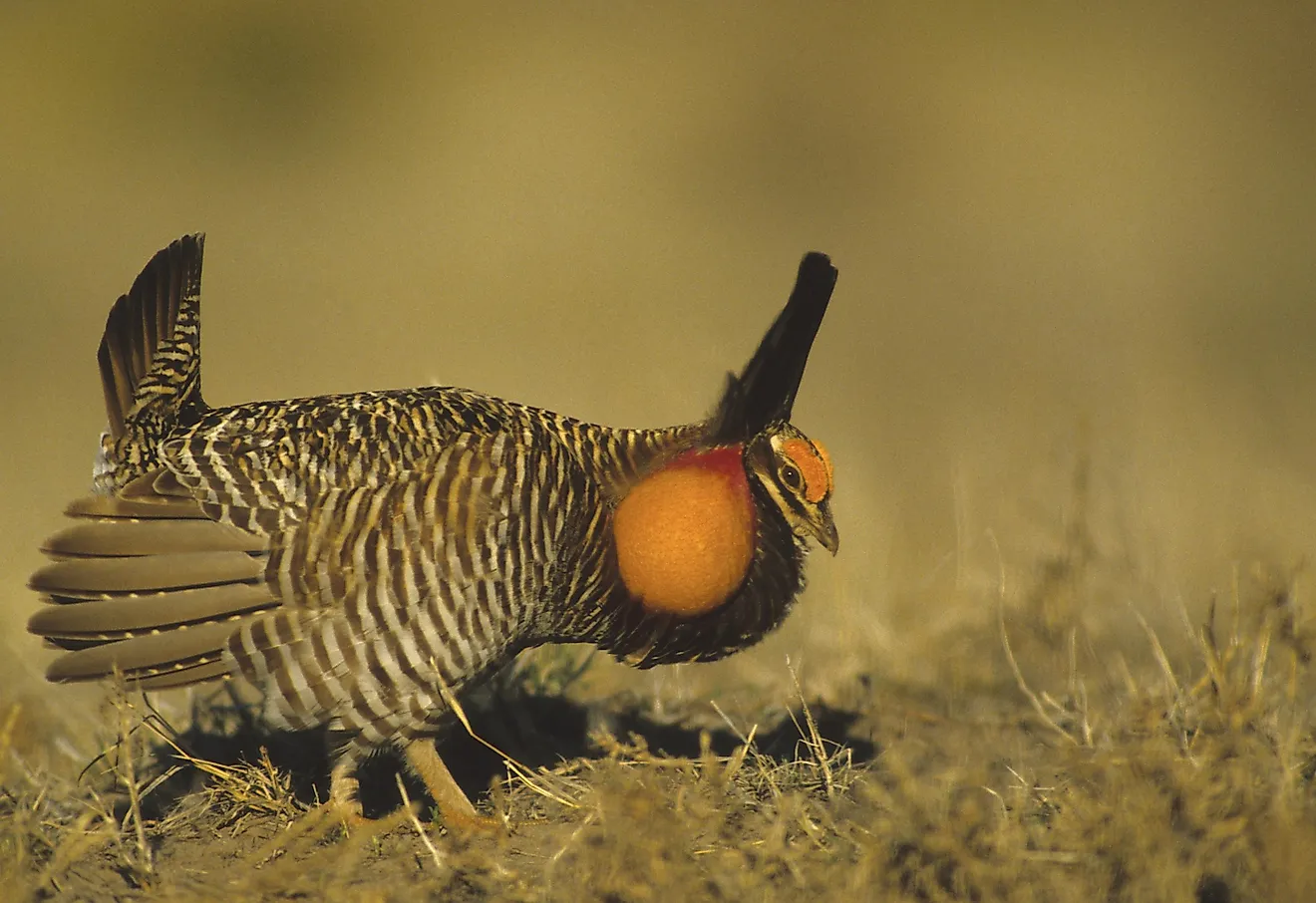Prairie Chicken Facts: Animals of North America

5. Physical Description
The Greater Prairie Chicken (Tympanuchus cupido), also called the Pinnated Groose or Boomer, is in fact not a true chicken at all. While it, like the common chicken, is in the Family Phasianidae, the Prairie Chicken is actually more closely related to certain grouse species. These large birds are native to North America, and are still commonly found in the wild today. They are a brown to gray chicken-like bird, and grow to sizes much larger than farmed chickens. Prairie Chickens are stocky and round, they have a small tail that stands upright, and their tails are usually of a dark blue color.
4. Diet
These birds, which have served as food for many animals and humans alike, are themselves herbivores. Prairie Chickens' primary food sources include small grains, such as wheat, soybeans, milo (sorghum), and corn. They will also feast on seeds found on the ground throughout the prairies as well as the leaves of various plants. Each bird can travel several miles at a time in search of feeding grounds. During such instances, the birds will fly out at dawn, only to return to their home roosts near sundown.
3. Habitat and Range
As their names imply, Prairie Chickens roost on prairie fields that stretch across the American Midwest and the Northern and Central plains in all directions, from Canada to Mexico. Also, in parts of Texas, Oklahoma, and Mexico, a species of Prairie Chickens can be found called the “Lesser Prairie Chicken”. These Prairie plains are perfect for the Prairie chickens, as they provide perfect breeding grounds and their favored food supplies are typically in abundance. Prairie Chickens have recently been on the decline, as many of their homes have been encroached upon by farmland and suburbs.
2. Behavior
Prairie chickens are scavengers, and they comb the grasslands with their long-range vision. Male Prairie Chickens are most famous for their unique, strutting, mating stances. Their dances will establish their social rank, which is judged through the level of aggression shown by a given male. The more aggressive the male is, the more dominant he becomes. This typically also means that these dominant prairie chickens have a higher chance to reproduce and carry on their bloodlines.
1. Reproduction
When the female prairie chicken is fertile, the males will perform a strutting mating dance. Males will meet at a communal ground (usually a feeding area) called a "lek", where they will ruffle their feathers and raise their ears. The males will then inflate an orange sac located on the sides of their necks, and begin to emit a deep hooting moan. This “dance” attracts females, and the best “performers” will be rewarded with the opportunity to mate. When a female chooses her male, they will mate on the lek. When finished, the female will return to her nesting spot. A female prairie chicken will build her nest in thick vegetation, which creates a lining and depression in the ground, and makes it more difficult for predators to see and snatch away her and her eggs. An average female can lay up to 12 eggs, and these eggs will hatch after approximately 25 days of incubation. The birds have a very high hatching rate, between 73% and 93%. Nonetheless, only between 22% and 65% of these hatchlings will survive to grow into mature adults.











